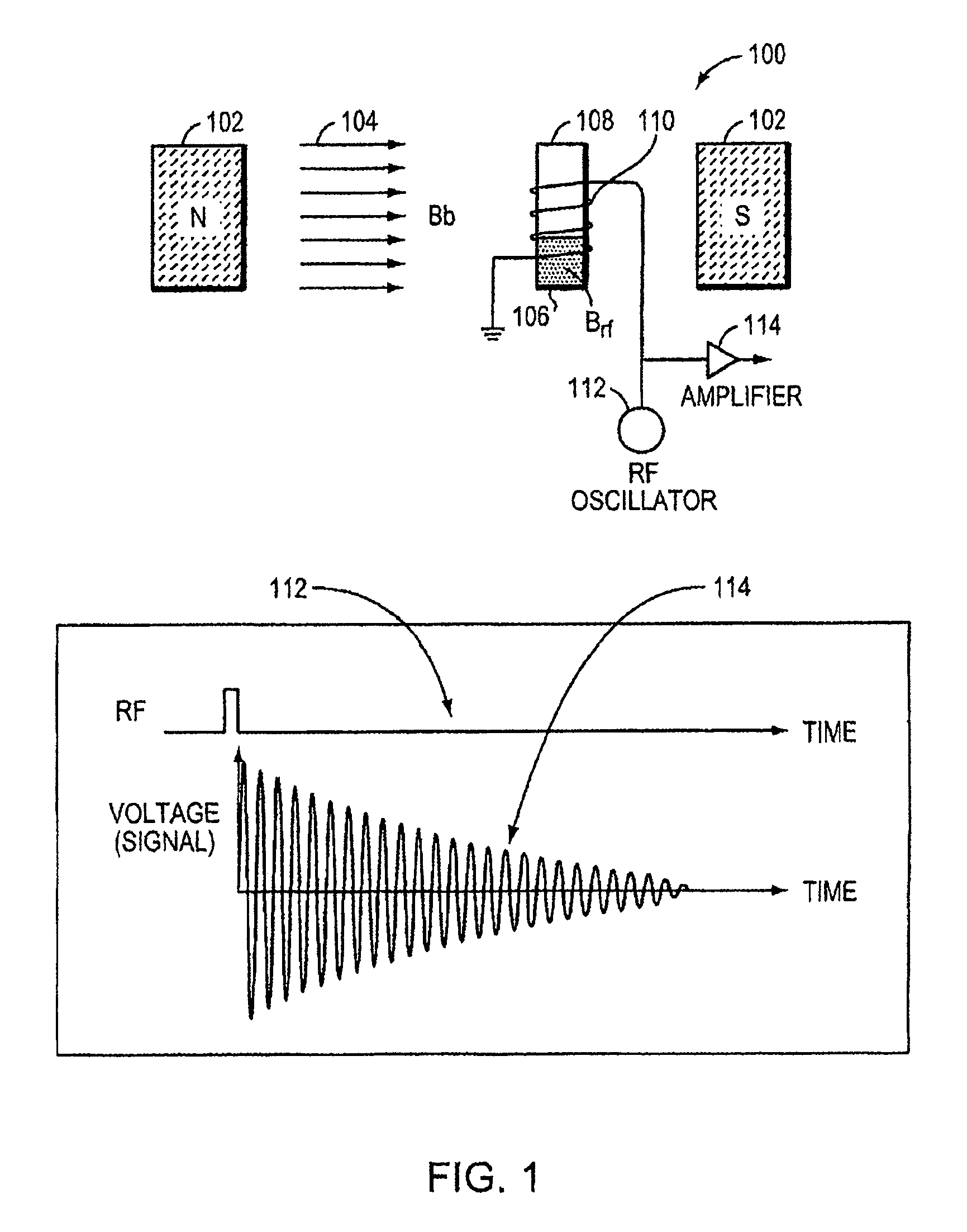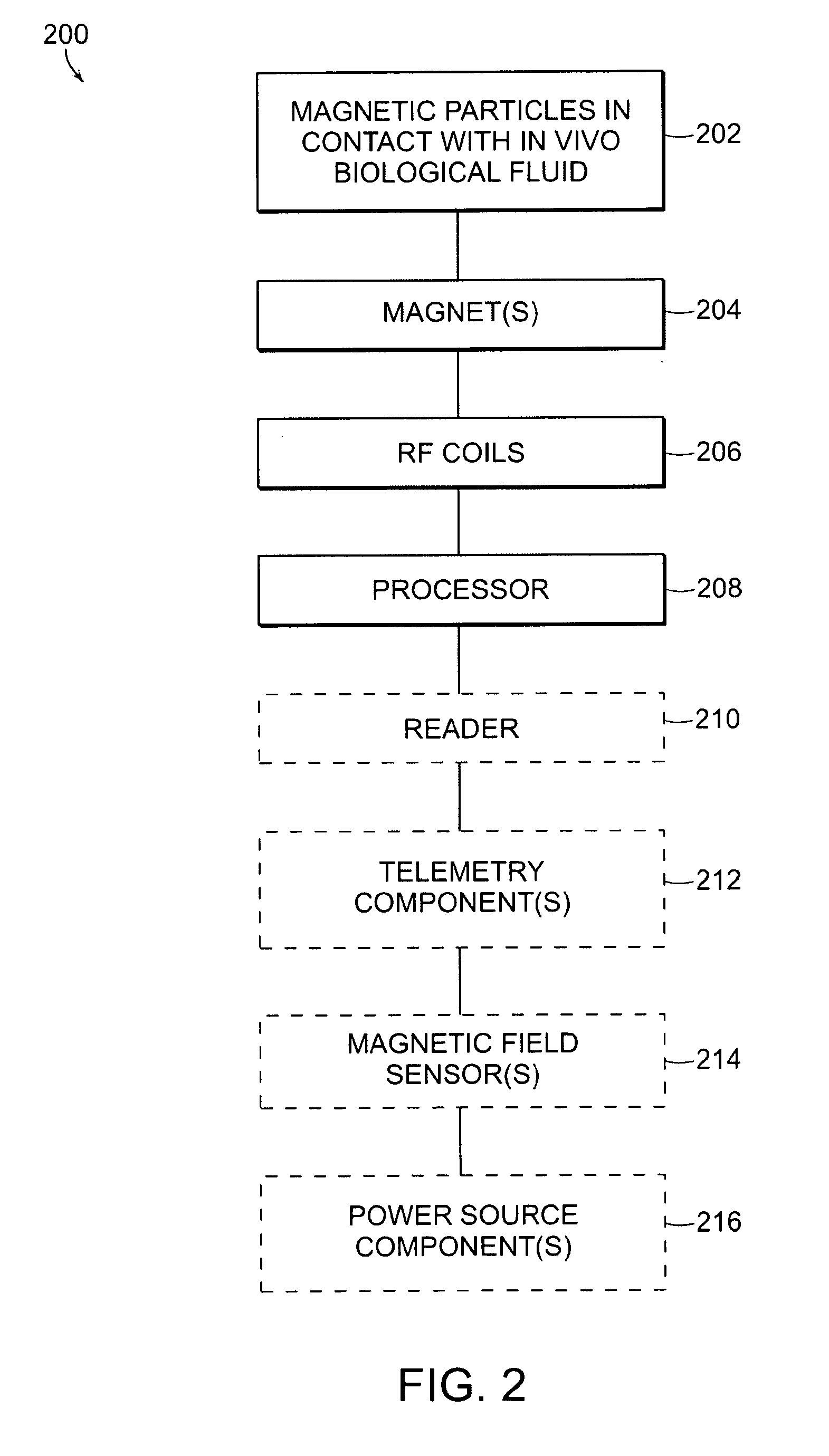Nmr systems for in vivo detection of analytes
a technology of in vivo detection and nmr, applied in the direction of nmr measurement, diagnostics using spectroscopy, instruments, etc., can solve the problems of inability to perform the diversity of assays at high sensitivity, system general lack of sensitivity, calibration, maintenance, etc., and portable systems also lack the sensitivity that is possibl
- Summary
- Abstract
- Description
- Claims
- Application Information
AI Technical Summary
Problems solved by technology
Method used
Image
Examples
Embodiment Construction
[0030]The invention provides NMR-based systems for assessing the presence and / or concentration of one or more analytes in vivo in a biological fluid. The systems contact nanoparticles in vivo with a biological fluid and provide an RF excitation at the appropriate wavelength, such wavelength being a calculable function of magnetic field strength at the measured volume. The RF excitation produces one or more detectable RF echo signals representative of the degree of aggregation or disaggregation of the particles within the measured volume, which is a function of the concentration or presence of the analyte in the volume. The presence and / or concentration of the analyte within the volume can then be determined from the detected RF echo signal(s).
[0031]Use of RF excitation at a particular wavelength or within a narrow bandwidth provides improved sensitivity of the in vivo detection system. Systems of the invention make possible the use of RF excitation with a narrow bandwidth, because t...
PUM
 Login to View More
Login to View More Abstract
Description
Claims
Application Information
 Login to View More
Login to View More - R&D
- Intellectual Property
- Life Sciences
- Materials
- Tech Scout
- Unparalleled Data Quality
- Higher Quality Content
- 60% Fewer Hallucinations
Browse by: Latest US Patents, China's latest patents, Technical Efficacy Thesaurus, Application Domain, Technology Topic, Popular Technical Reports.
© 2025 PatSnap. All rights reserved.Legal|Privacy policy|Modern Slavery Act Transparency Statement|Sitemap|About US| Contact US: help@patsnap.com



